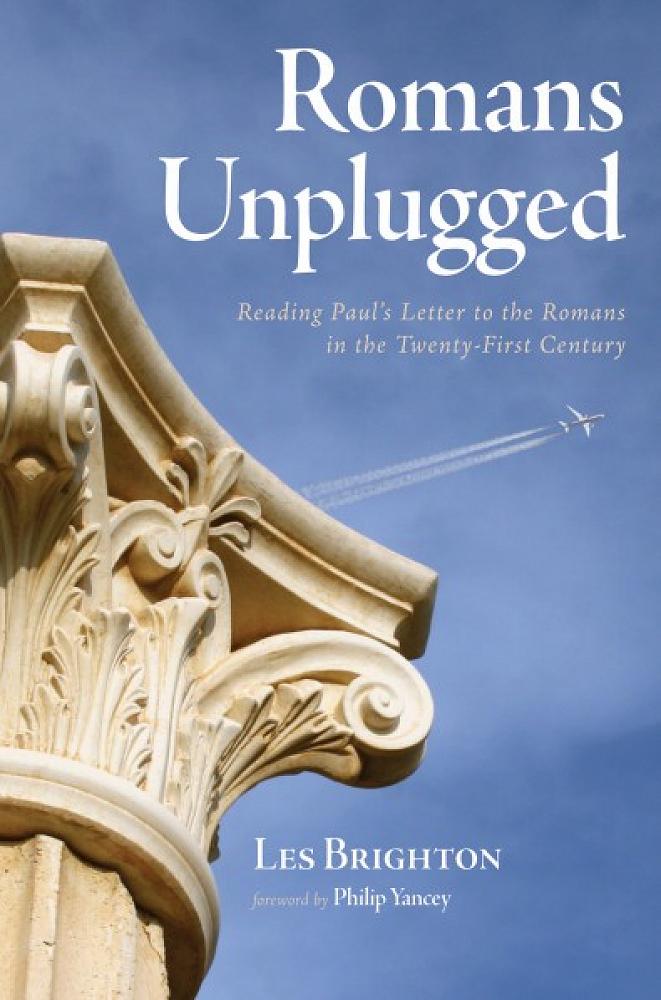
Book Review: Romans Unplugged: Reading Paul's Letter to the Romans in the Twenty-First Century
Les Brighton, Eugene OR: Wipf & Stock, 2019. XXXVI + 269 PP. ISBN 978-1-5326-9069-3. US$35.00
This is a rather unique book, a mixture of commentary and sermonising. It comes from an author with terminal cancer, aware that he would soon face death. This led to the book covering only the first eight chapters of Romans. Brighton died the same month he wrote the preface to his book (October 2017). This gives it a sense of profound poignancy—a kind of spiritual last will and testament about what really matters.
Brighton was rather critical of conventional academic commentaries. His book was “not for scholars, but for ordinary thoughtful Christians” (xxii). Why not write a more conventional commentary? Well, the very nature of commentaries “tends towards the consideration of individual trees rather than the forest” (257). True—sometimes. Brighton leaned to the broad-sweep side of things but did he sometimes also lock onto specific points at the expense of the bigger picture. His argument that Paul is focusing on Roman Christians, not Jews, in Romans 2–3 (29, 42–43) is a case in point. His argument fails to consider the remarkably Jewish flavour of Romans as a whole (e.g., 1:3; 1:16; 4:1; 9–11; 14:8).
Interestingly, Brighton’s book still has some of the marks of a commentary. It includes his own translation of the whole text, and it explores the verses that make up that text. It has lots of endnotes—placed rather oddly within the book, making reference to them a little awkward. They are not located at the end of the book, or at the end of each chapter of the book; rather, for some reason, they are in four clumps within the book, at the end of the Introduction, and at the end of each of what Brighton considered to be the three main sections of Romans one to eight.
Brighton had the ambitious goal of writing a “page-turner on Romans” (xxii). A page-turner? That suggests a book that is so exciting that you want to read it quickly. Well, parts of Brighton’s book are a page-turner, but parts not.
Parts grip. The resurrection of Jesus is graphically viewed as the “fingerprints of the creator God acting to remake the world” (126). How can Jesus’ resurrection affect us? Brighton’s answer is that we are profoundly collective in nature, not simply individuals. To illustrate this, he described at length the migration of monarch butterflies in North America. It takes several generations to complete a return flight to their place of origin. How can the memory of origin be transmitted through several generations, enabling the butterflies to find their way home? Brighton here drew from the controversial scientist Rupert Sheldrake, arguing for species-wide collective memory (202). From this, Brighton asserted that we are much more than individuals. And so we can better grasp our collectivity “in Adam” (Romans 4.12ff.) and in “Messiah Jesus” (145).
Throughout his book, readers will be strongly aware of Brighton as a preacher. Sections of it read as colourful sermons. An aspect of this is Brighton’s recounting aspects of his own life. This included a page-long outline of his own entry into Christian conversion (159–60); also some personal temptations and struggles (169, 192).
Present, too, are discussions of complex translation issues. One relates to the Greek word pistis. This has a double aspect (a) because the word may refer to ‘faithfulness’ as well as ‘faith’, and (b) because pistos Christi may refer to faith in Christ, or to the faith(fulness) that Christ has. Traditionally, stemming significantly from the Protestant Reformation, pistos Christi has been understood as faith in Christ (following Luther in this). More recently, many scholars (though not all) understand pistos Christi as the faith(fulness) that Christ has.
Brighton waded into this debate on the side of translating the term as relating to Christ’s faithfulness (60, 98, et al.). This has the theological advantage that it keeps the focus on what God in Christ has done (his faithful activity) rather than what our response must be—and this coheres with an epistle greatly weighted towards the grace of God in Christ. It also has the advantage of turning our awareness in a much more relational direction: “One person’s faithfulness reaches out towards the faith of another. One person’s faith calls for the faithfulness of the other … What is being described is a relationship” (13).
Brighton’s approach led him to put a huge emphasis on God’s/Christ’s activity in the relationship. This led him to make bold (and in my view wrong) claims that Romans does not talk about faith in Jesus (62, cf. Romans 10:9); that there are no ‘ins’ and outs’ in terms of Christ’s reconciling act (191, cf. 1 Cor 1:18); that there are no conditions such as repentance or remorse for our restoration (139, cf. 2 Cor 7:10); and that the life of Jesus is not an ideal to imitate (225, cf. 1 Cor 11:1).
Brighton’s book has displayed a golden egg—the gracious activity of God in Christ. I think, however, that he has over-egged his position. I am reminded of the words of another Romans scholar, Klyne Snodgrass: “An important criterion by which any explanation of Paul’s thought or of Romans can be judged is the question, ‘What does the explanation do with the pieces that do not fit?’”[1]
I am grateful that Brighton’s book highlights God’s activity in Christ. And I am grateful for his stress on the relational aspect of Paul’s gospel; that justification is not a detached forensic term, but rather a right relationship restored through Christ’s mediation.
Some aspects of a preacher’s sermon can be shed without detracting from its central emphasis. I remain grateful for the two central emphases of Brighton’s “sermon”—grace and relationship.
Laurie Guy is a retired lecturer, who taught at Carey Baptist College. His teaching career, mainly in church history, included teaching Romans, and he has written on Revelation.
[1] Klyne R. Snodgrass, “Justification by Grace—to the Doers: An Analysis of the Place of Romans 2 in the Theology of Paul”, New Testament Studies, 32 (1986), 72–93 at 72.
